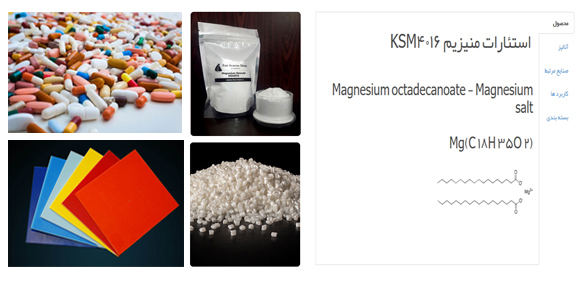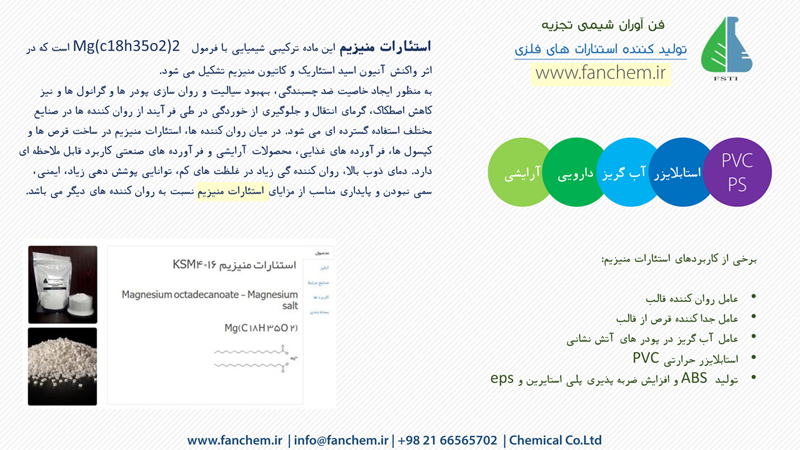
Magnesium stearate
Magnesium stearate fsm4014 & fsm4014sf can be produced through the following procedure: first get the sodium stearate through the saponification between stearic acid and sodium; then the sodium stearate has double decomposition reaction
Magnesium stearate fsm4014 & fsm4014sf can be produced through the following procedure: first get the sodium stearate through the saponification between stearic acid and sodium; then the sodium stearate has double decomposition reaction with magnesium sulfate to get the finished product.
Stearic acid and water was added to the reaction pot and heated to 85 ℃, stirring to dissolve, slowly add them to the sodium hydroxide solution preheated to 75 ℃. After the saponification reaction was completed, the temperature was controlled at 72 ℃ and slowly added to the magnesium sulfate solution preheated to 55 ℃ upon stirring.
After metathesis, apply centrifuge to remove the water. The filtering cake was washed with water until sulfate ion requirement is met, then dry, apply air drying, sifting to obtain the finished products with the yield of stearic acid being 100%.
It is produced through the combination reaction between magnesium oxide and food grade solid mixed fatty acids (mainly stearic acid) and further refinement.

This product can be used as the thermal stabilizer for PVC, the raw material of cosmetics, flour, soothing ointment and medicine tablet (forming agents, emollients); MgSt2 is an Internal Lubricant too, it can be applied to the bakelite powder to make it be lubricant, bright and transparent; it can also be applied to paint industry for being used as transparent flatting agents.
The metal soaps for being used as a PVC stabilizer are mostly the high-grade fatty acid salt of cadmium, barium, calcium, zinc, and magnesium. Forming groups belong to the salts of stearic acid and lauric acid.
The performance of the metal soaps stabilizers is different with different types of metals and acid groups with the general principles being as follow: Heat resistance: cadmium, zinc soap has an excellent heating resistance during the initial period; barium, calcium, magnesium, and strontium soap have a long-term heat resistance with lead soap existing in the middle.
Weather resistance: cadmium, zinc, lead, barium and tin soap are better. Workability: lead and cadmium soap have excellent lubricating property but acid radicals are also very influential to the lubrication. For the same kind of metal, it is better as aliphatic than the aromatic group.
For aliphatic acid radical, a longer molecular chain will also have a better lubrication property. It is widely used in food, pharmaceuticals, paints, plastics, rubber, textiles, etc. Barium, calcium, magnesium, strontium soap has a poor lubrication property but with the excellent gelling property.
Plate-out property: barium, calcium, magnesium, and strontium soaps are also prone to have plate-out phenomenon while zinc, cadmium and lead soap are less prone to get the plate-out issue with longer molecular chain fatty acid soaps having a more severe plate-out problem as well as the more severe blooming issue.
Lead and cadmium soap have high toxicity together with sulfide pollution. In the non-toxic formulation, people mostly apply calcium and zinc soap; sulfide contamination resistant formula more barium and zinc soaps. Magnesium stearate can be regarded as being non-toxic, the United States, Germany, and Japan allow it to be applied to products being contact with food. However, it doesn’t have wide application to be applied as PVC heat stabilizers.
In China and some other countries Pharmacopoeia, there are always records of this species. The pharmacopeia has also made provisions on the magnesium content, moisture, heavy metals, iron, sulfate, and chloride content.





